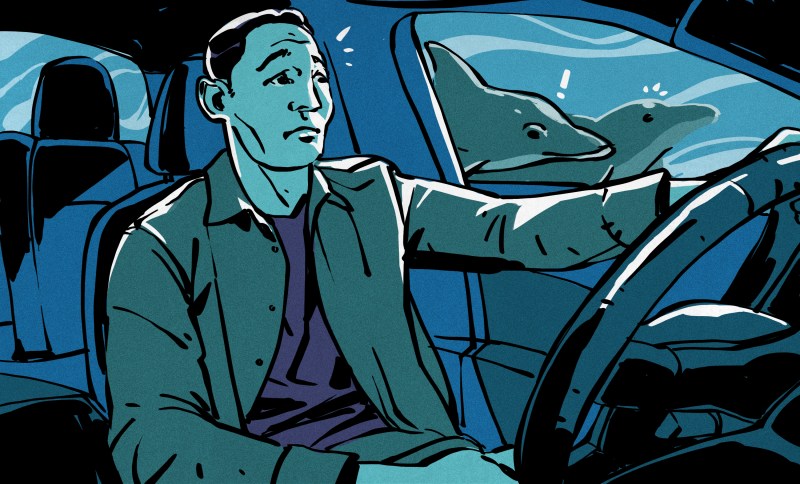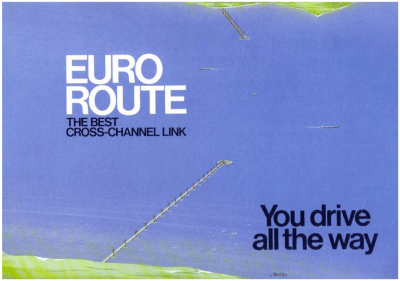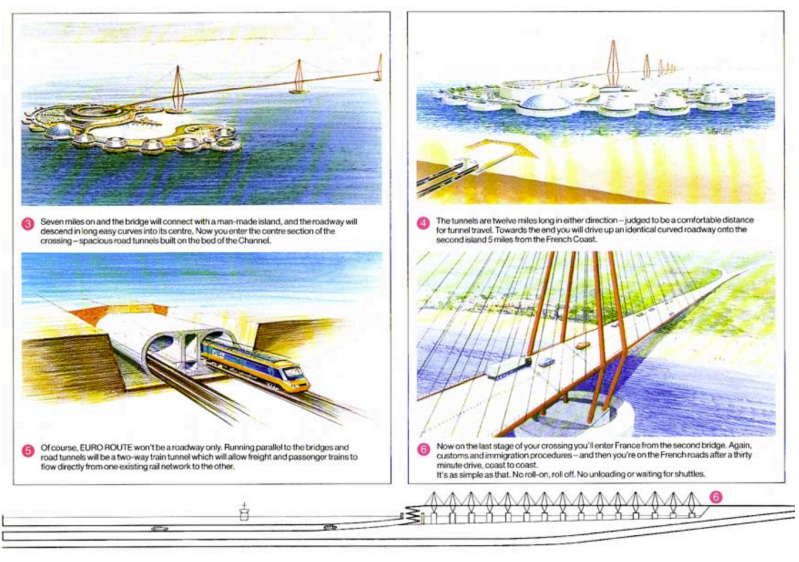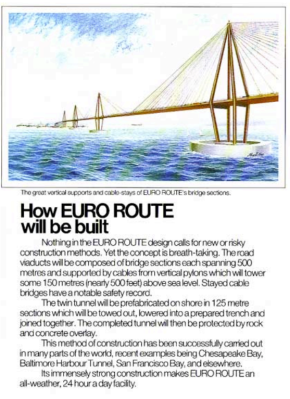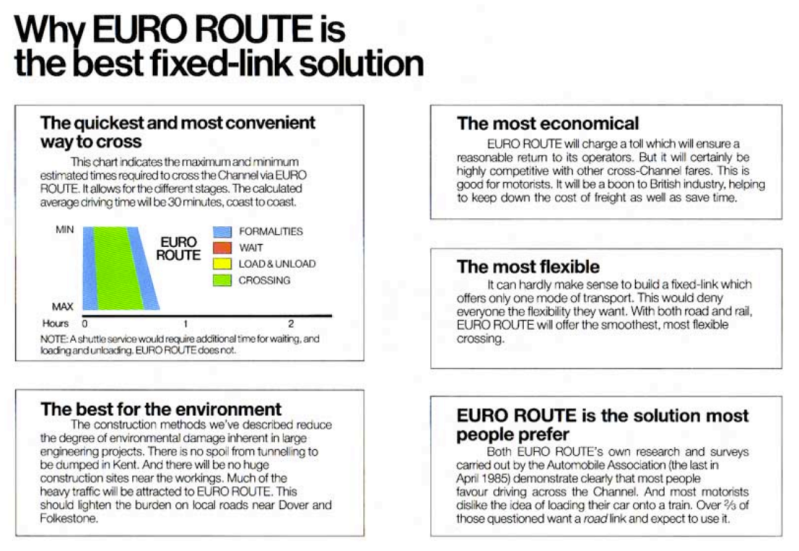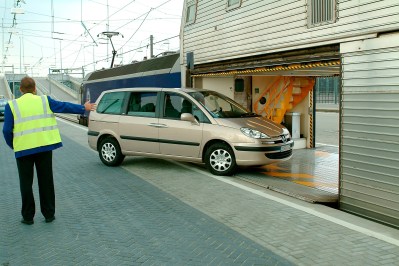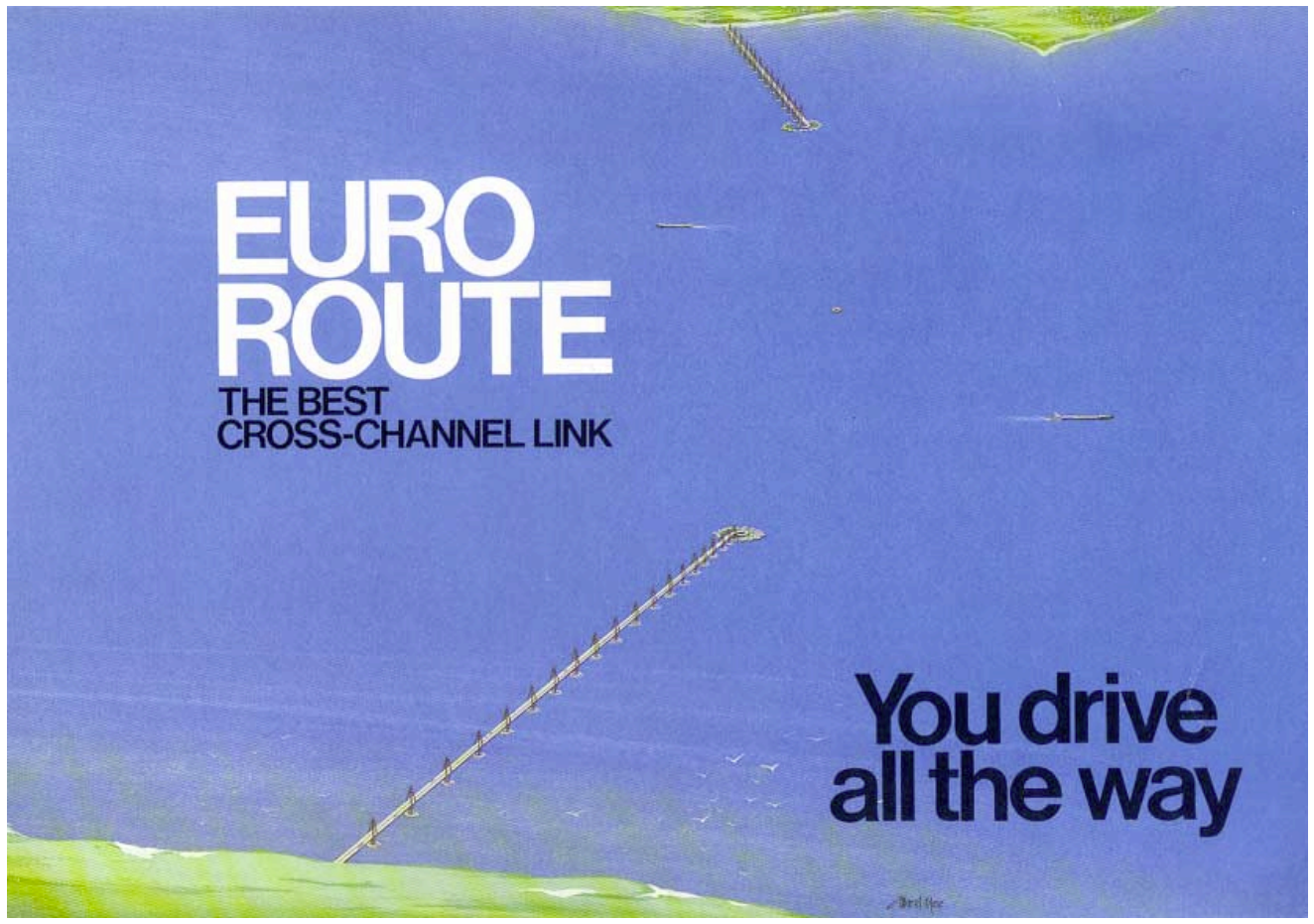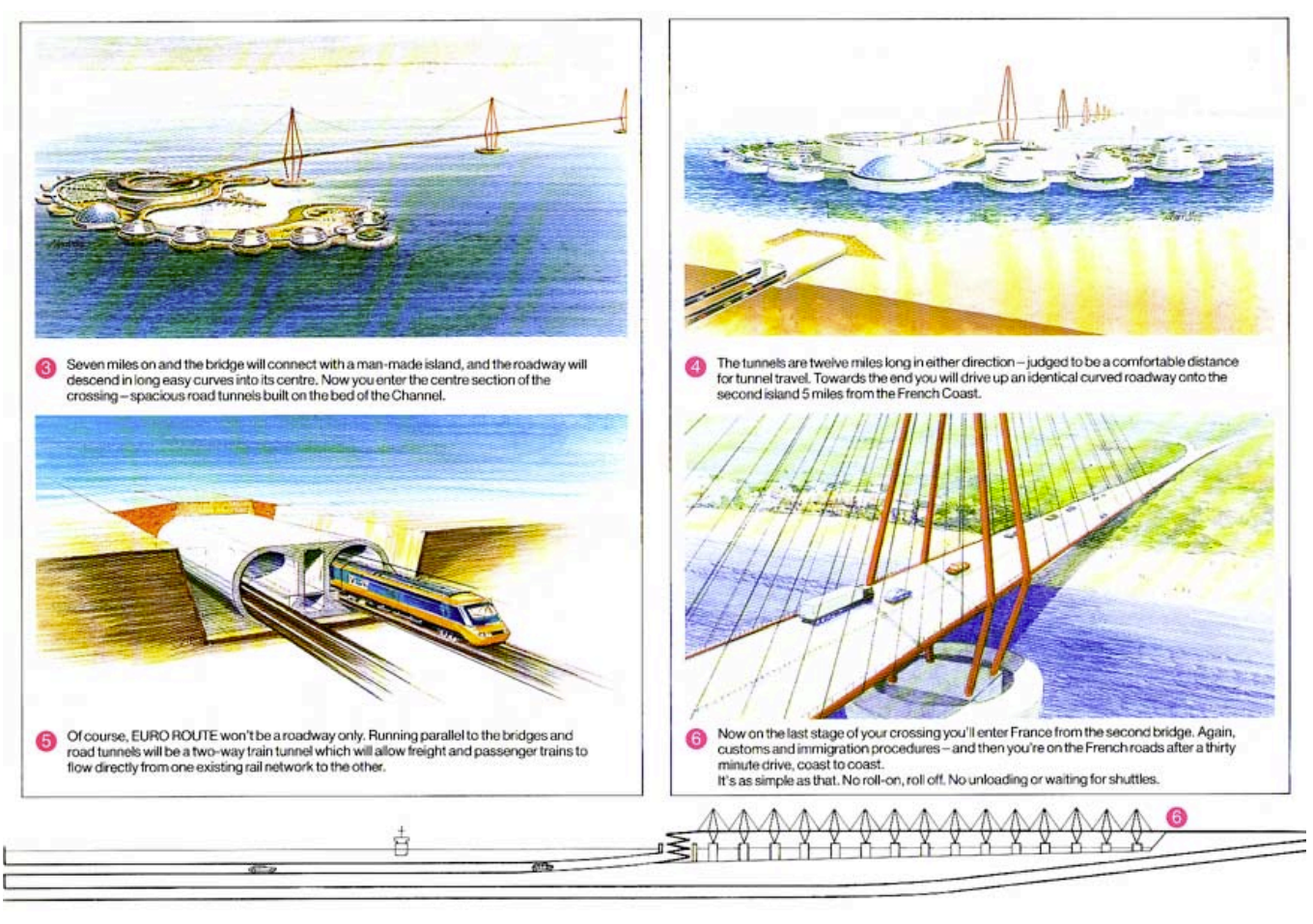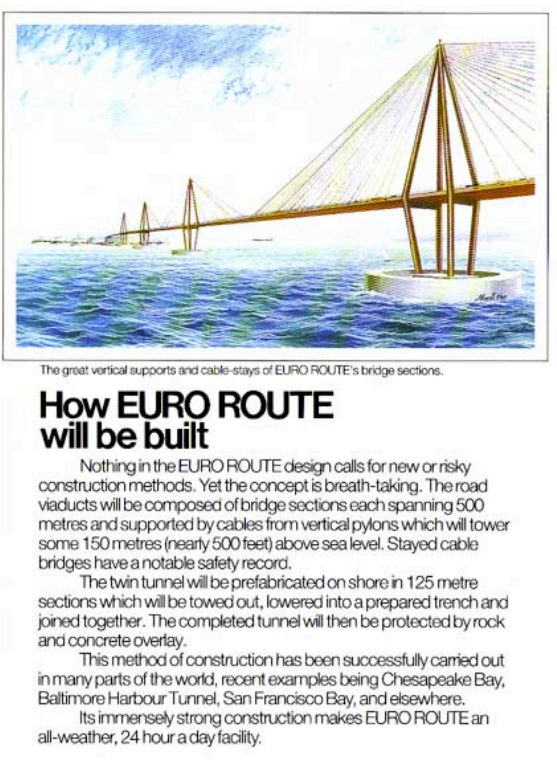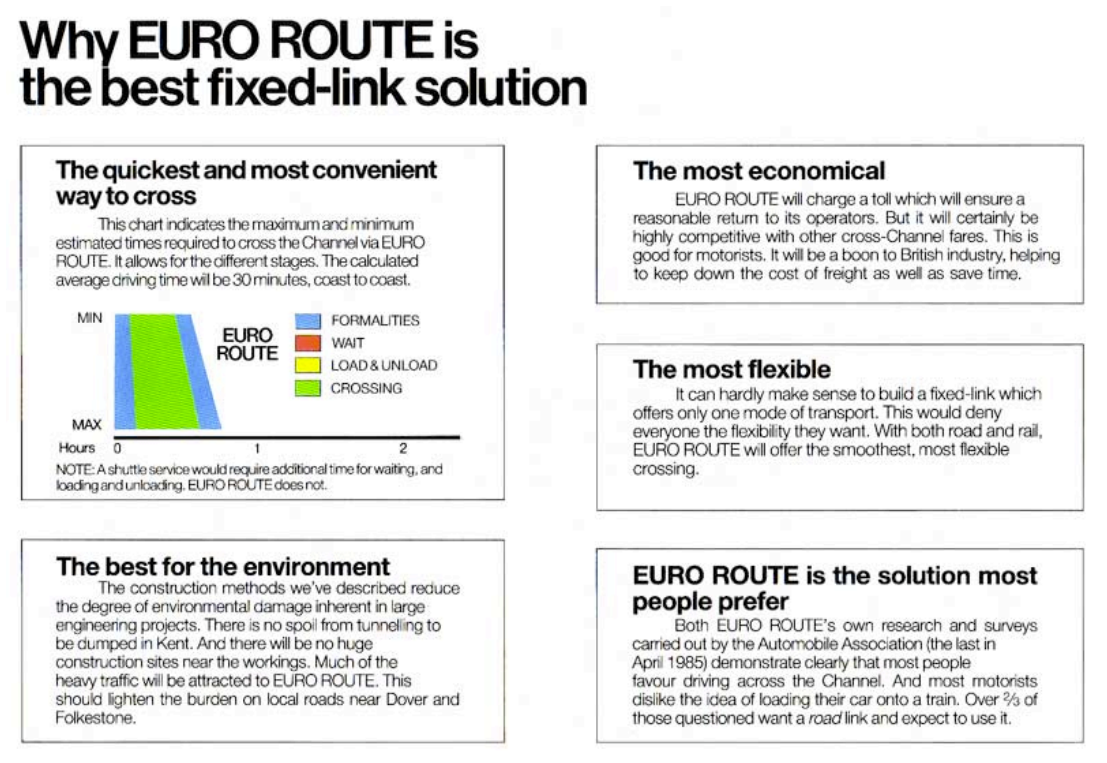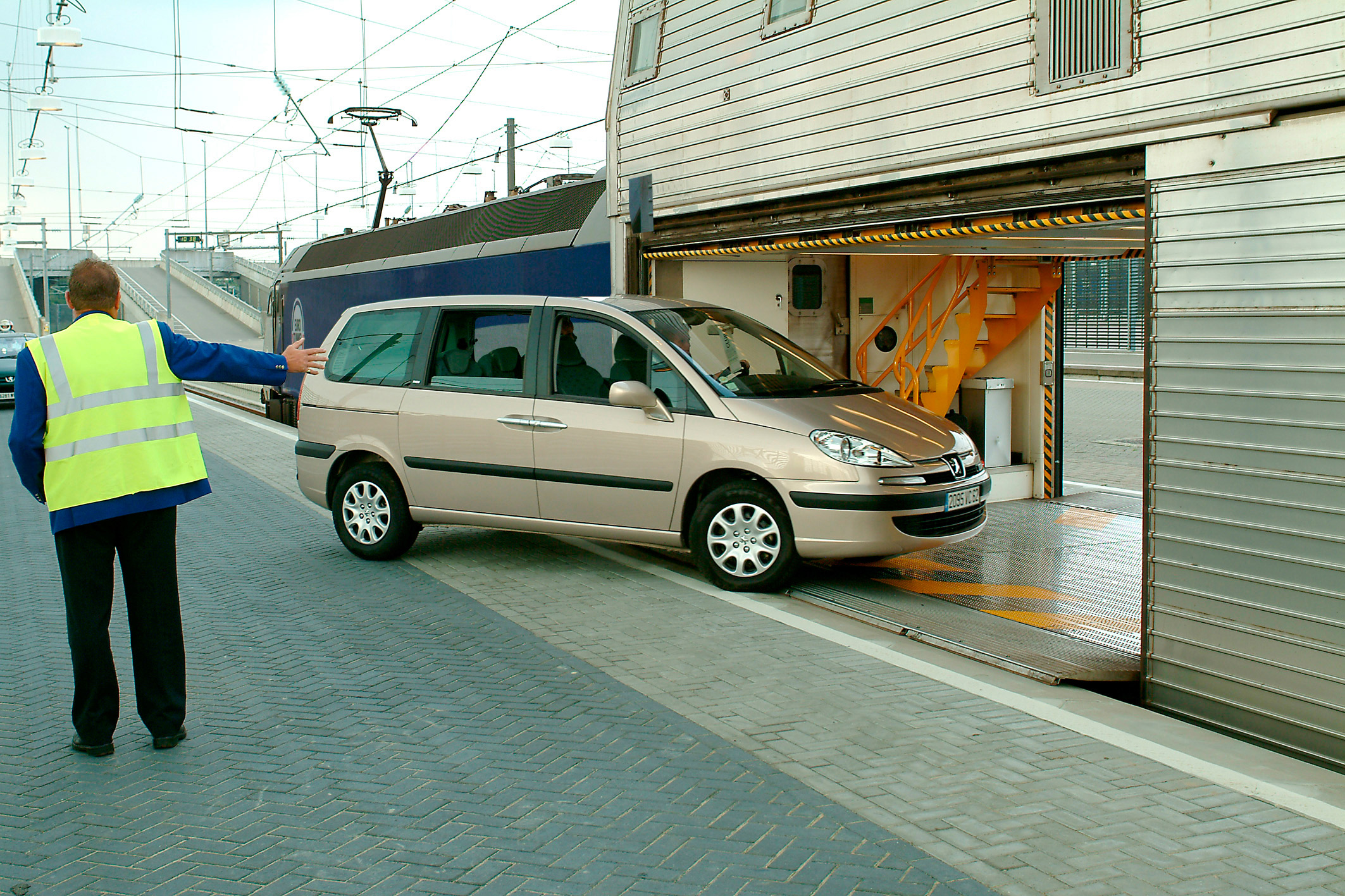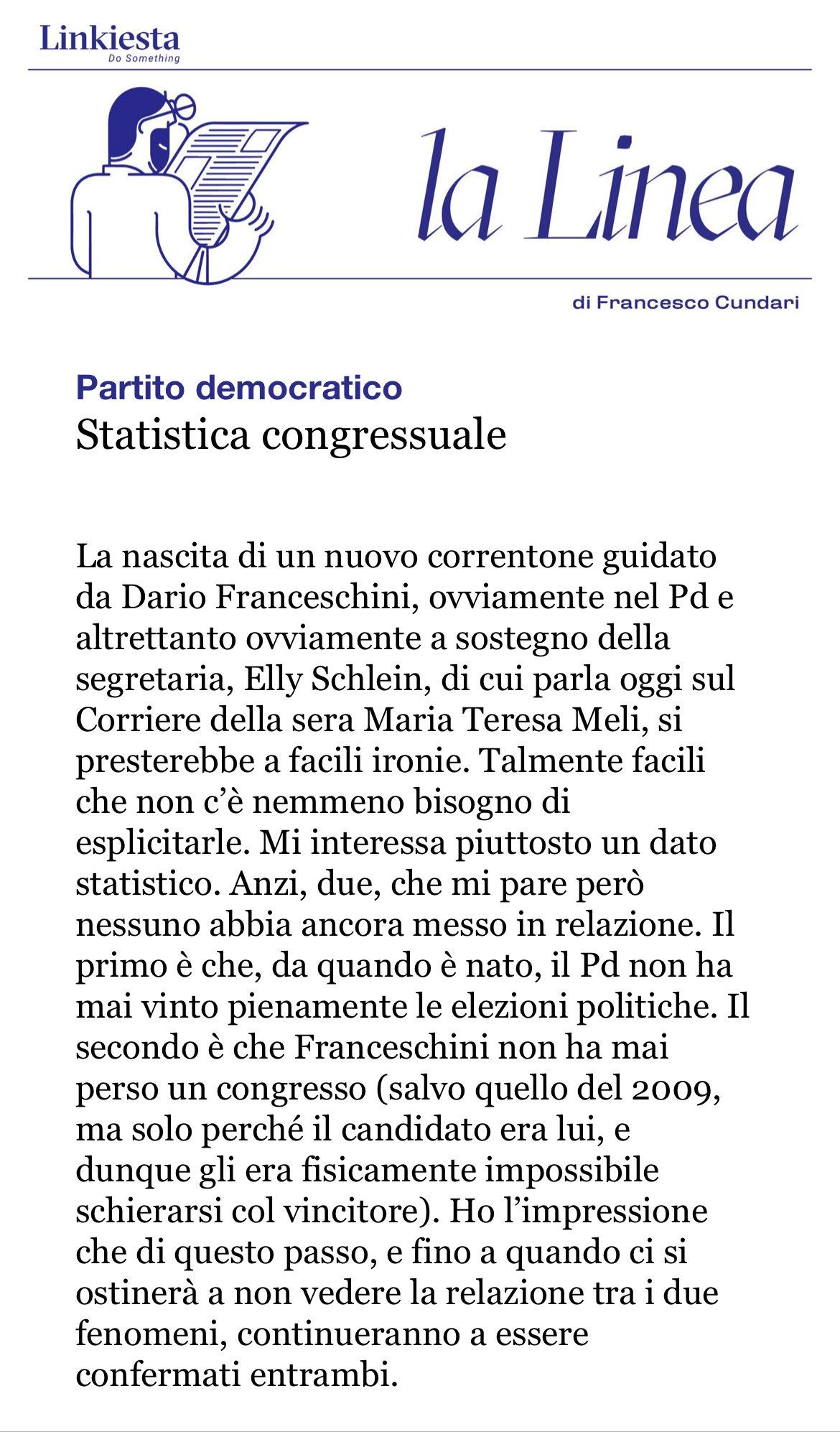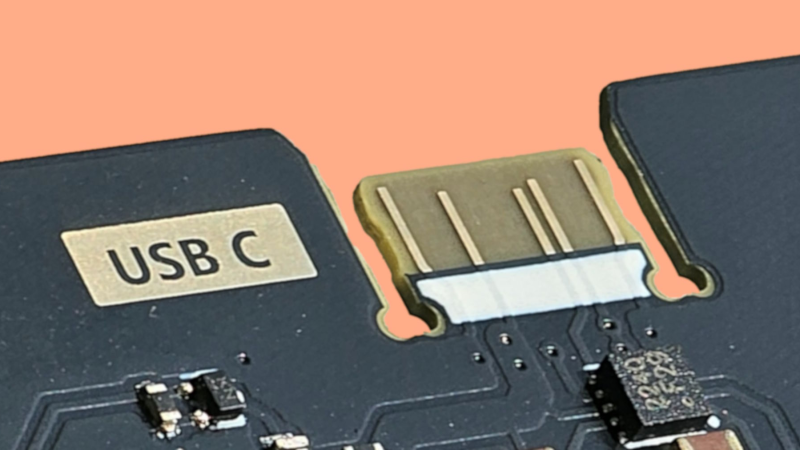The Channel Crossing Bridge That Never Was
Full marks for clarity of message. Credit: Euro Route materials
When the Channel Tunnel opened in 1994, the undersea rail link saw Britain grew closer to the European mainland than ever before. However, had things gone a little differently, history might have taken a very different turn. Among the competing proposals for a fixed Channel crossing was a massive bridge. It was a scheme so audacious that fate would never allow it to come to fruition.
Forget the double handling involved in putting cars on trains and doing everything by rail. Instead, the aptly-named Euro Route proposed that motorists simply drive across the Channel, perhaps stopping for duty-free shopping in the middle of the sea along the way.
Long-Held Dreams
The concept of a permanent tunnel or transit link between Britain and France dates back a long way. The earliest recorded example is from 1802, when French engineer Albert Mathieu-Favier proposed a tunnel design for horse-drawn stagecoaches to travel between the Isles and the mainland. Ultimately, though, the feasibility of engineering such a project was beyond the limits of the time. The idea would never quite go away, though, with the British and French governments eventually coming to explore it in earnest starting in the late 1950s. The Channel Tunnel Study Group was established as an Anglo-French task force to explore the possibilities of building a crossing between the two nations. This led to an early effort to construct a cross-Channel tunnel beginning in 1973, only for the project to be scrapped two years later by British Prime Minister Harold Wilson on the basis of cost and the strains of the worldwide oil crisis.
The split bridge-tunnel-bridge concept was chosen due to concerns around comfort and air quality in a full-length Channel-crossing tunnel. Credit: Euro Route materials
It would be over a decade before the concept returned to the fore. The French and British governments reconvened in 1984 to establish baseline parameters for the project, before opening up the project to proposals in 1985. That process saw the Channel Tunnel Group win the day with a plan for a 51.5-kilometer dual-track rail-only tunnel, with trains carrying passengers and hauling cars between the two countries. The Treaty of Canterbury was signed in 1986, and construction began soon after, eventually leading to the infrastructure that exists today.
The tall cable-stayed bridges would avoid any issues with sea traffic passing through the area. Credit: Euro Route materials
The Channel Tunnel might have been the winning project, but it wasn’t the only proposal on the table. The Euro Route project was an altogether bolder scheme. Their plan called for a three-stage crossing combining both road and rail. Cars would travel via a spectacular road link featuring bridges springing from each coast, leading into an immersed tunnel running through the deepest section of the Channel. Meanwhile, there would also be a twin-track rail tunnel not dissimilar from the Channel Tunnel itself.
The Euro Route project was marketed based on its key offering—users would be able to drive all the way with a minimum of fuss. “From your home you will drive straight to France,” read the marketing materials. There would be no fussy loading and unloading of automobiles on to train cars. Meanwhile, those that wished to travel by rail could equally do so via the separate rail tunnel, with freight trains using the passage as well.
The project would not be cheap. Estimates were that it would cost some £6 billion to build (1985 prices). At the time, this figure came in at two to three times what the Channel Tunnel proposal was expected to cost—no surprise given it also involved an entire road crossing in addition to a rail tunnel. However, the project was backed by a consortium of heavyweight British institutions—including British Steel, Barclays Bank, and GEC—which had together secured over seven billion pounds in funding for the project. The intention was that it would be paid for in time by charging tolls to access the crossing.
The road crossing was designed for drama and practicality in equal measure. Motorists would leave the M20 near Dover, before passing through toll booths to pay for the journey. From there, they would make their way onto a bridge standing some fifty meters above the waves. This cable-stayed bridge would stretch for 8.5 km to an artificial island, where the motorway would spiral down beneath sea level to the undersea tunnel below. This tunnel consisted of a 21 km immersed tube tunnel carrying parallel dual carriageways safely beneath the shipping lanes, emerging at a second artificial island before another bridge carried traffic the final 7.5 km to France. A third artificial island would also sit in between the other two, serving as a ventilation shaft for the road tunnel and acting as a marker to enforce lane discipline for shipping in the Channel.
Euro Route’s prime point of difference was that it avoided the tedious loading and unloading of vehicles on to train cars versus the eventual Channel Tunnel concept that was chosen. Credit: Euro Route materials
All in all, traveling the Euro Route was expected to take just 30 minutes over the road. Customs formalities were to be “speeded up by computer” to ease the journey, pushing the total time to approximately 45 minutes. This was to be a key advantage over concepts like the all-rail Channel Tunnel. “NOTE: A shuttle service would require additional time for waiting, and loading and unloading; Euro Route does not,” noted the marketing materials. . Those behind the EuroRoute believed people wanted to drive across the Channel themselves, rather than sitting in their cars on a train for a longer period of time.
The combined bridge-tunnel-bridge concept was, at first blush, more complicated than simply building a single long road tunnel from coast to coast. However, such a tunnel would have likely measured well over 30 km in length. This was considered somewhat undesirable both for the length of time spent underground and the build-up of traffic emissions. The open-air bridges were used to help break up the journey so less time would be spent in a tube beneath the waves. This design also created opportunity, for the artificial islands weren’t seen as just entry and exit points to the tunnel below. EuroRoute envisioned them as destinations in their own right, with refuelling, refreshment, and parking facilities, as well as other niceties like hotels and duty-free shopping complexes.
As built, traversing the Channel Tunnel via automobile requires a lengthy loading and unloading process, since the cars are hauled by train. Credit: Ministère des Affaires Étrangères Français
The rail component proposed by EuroRoute was remarkably similar to what was eventually built as part of the Channel Tunnel project. It concerned a tunnel running between Cheriton and Sangatte, though EuroRoute planned to use immersed tube construction for the majority of its length, rather than boring through the entire length as with the Channel Tunnel. Overall, though, it similarly featured two tubes for bidirectional travel, with a central shaft for maintenance access.
The Euro Route proposal noted that public sentiment was on its side. Contemporary research suggested that fifty-two percent of people preferred driving across, with many actively disliking the car shuttle concept. Yet when decision time came, the governments chose the Channel Tunnel—ultimately the simpler, cheaper rail-only proposal. The fact that the Channel Tunnel project would end up with massive budget overruns and significant delays perhaps casts that decision in a different light. At the same time, we might never know how well—or how badly—construction of the Euro Route might have gone.
EuroRoute’s bridges and islands seem destined to remain forever on the drawing board, another grand infrastructure dream that fell victim to caution and economics. But those architectural drawings still capture something important—the ambition of an era when it seemed anything could be built, even a bridge linking two former bitter enemies over the busiest shipping lanes in the world.
hackaday.com/2025/10/27/the-ch…
